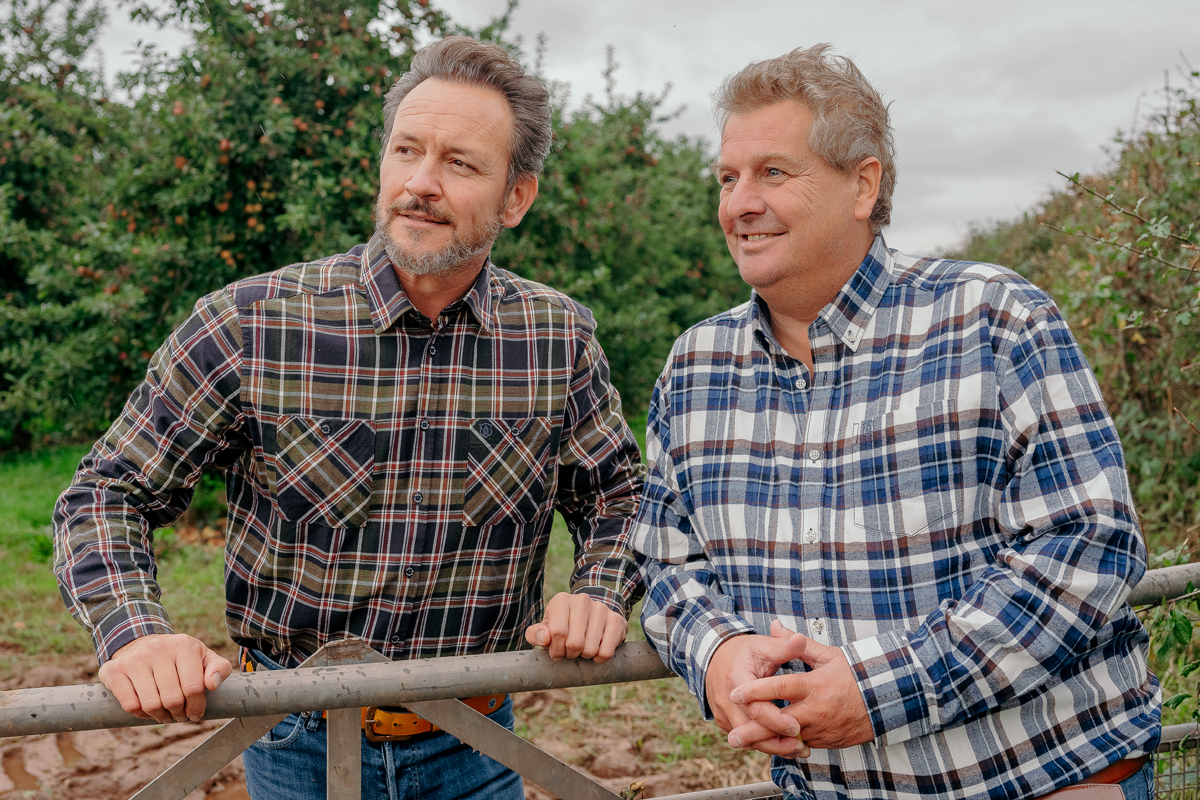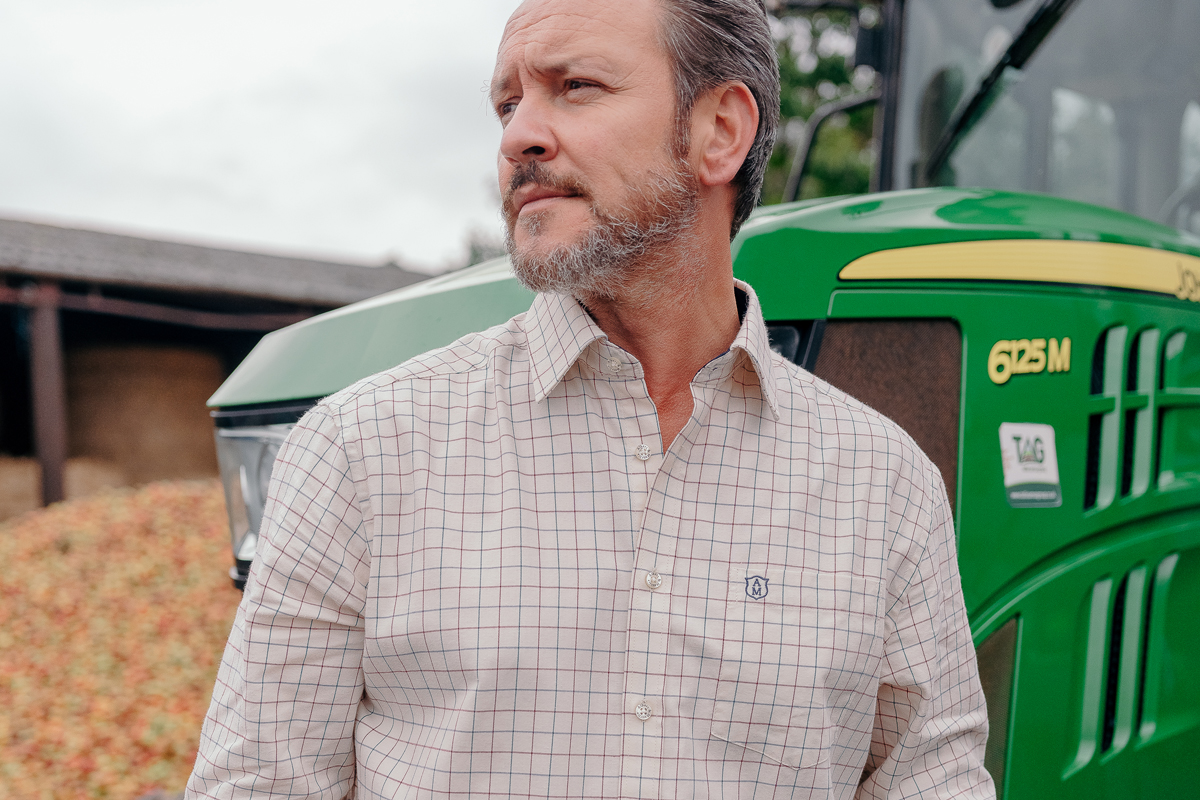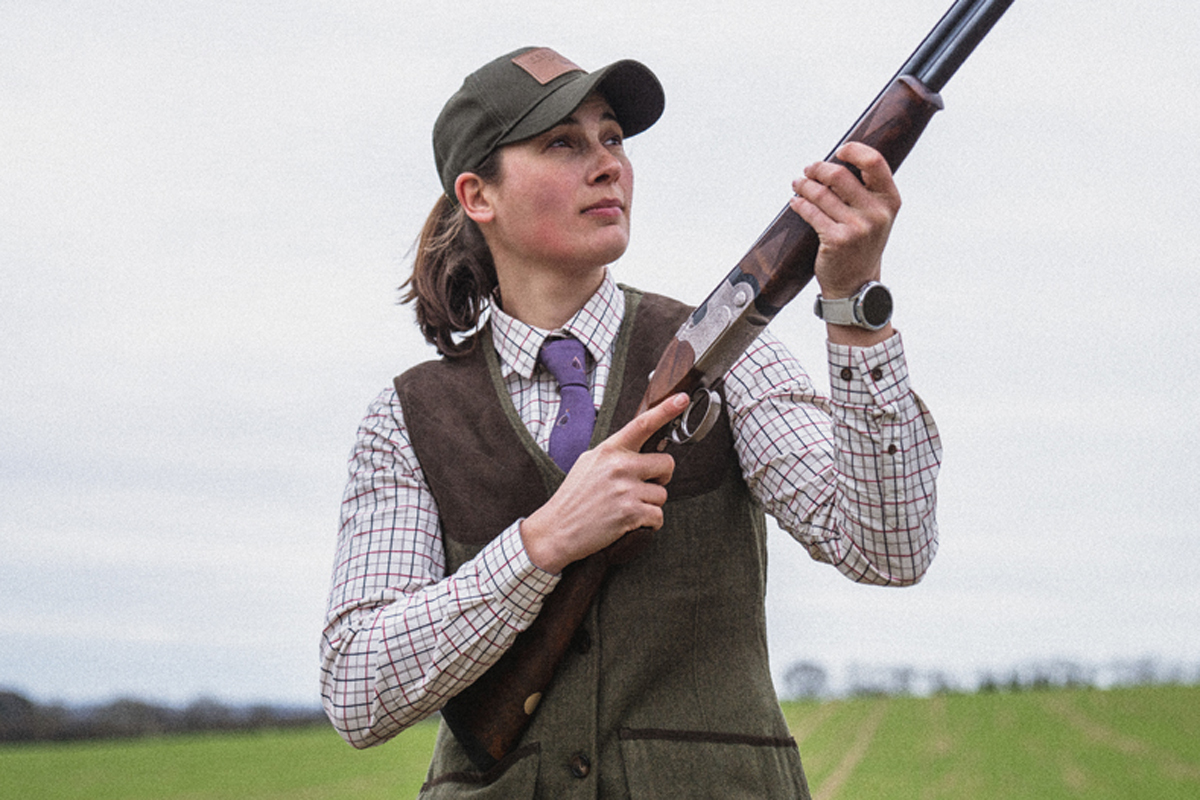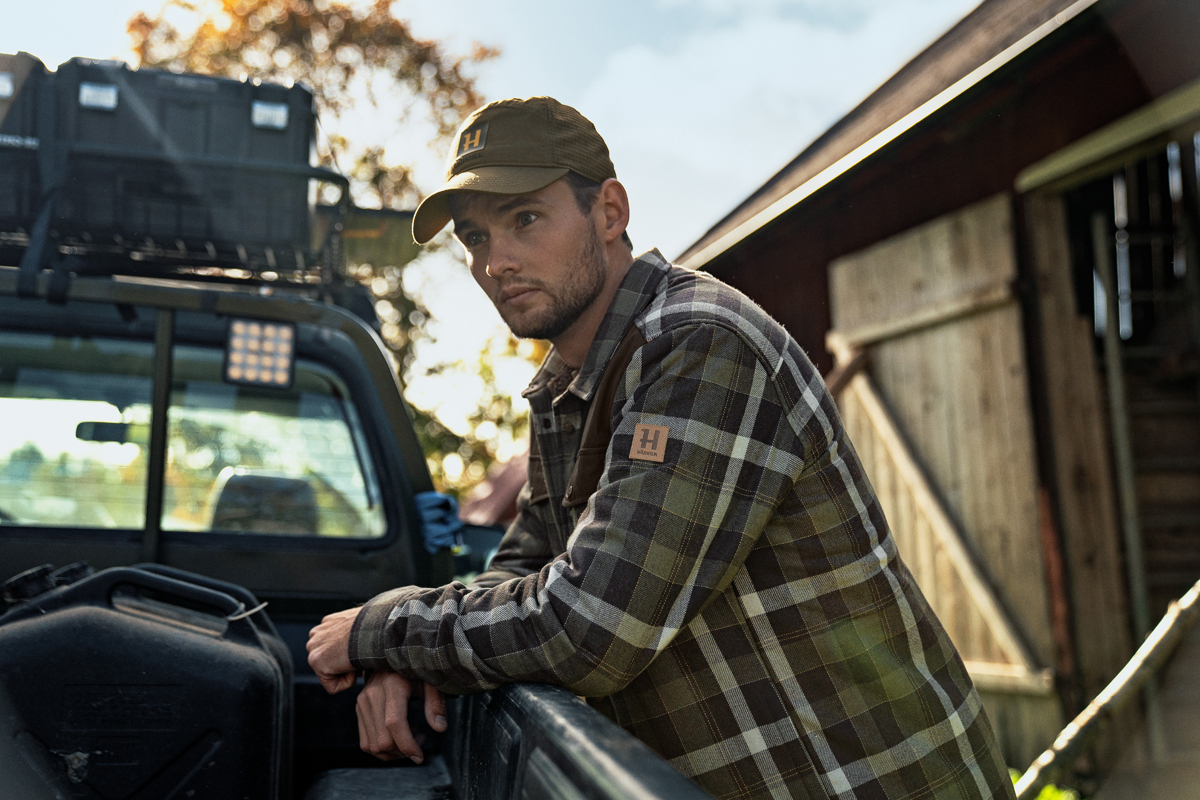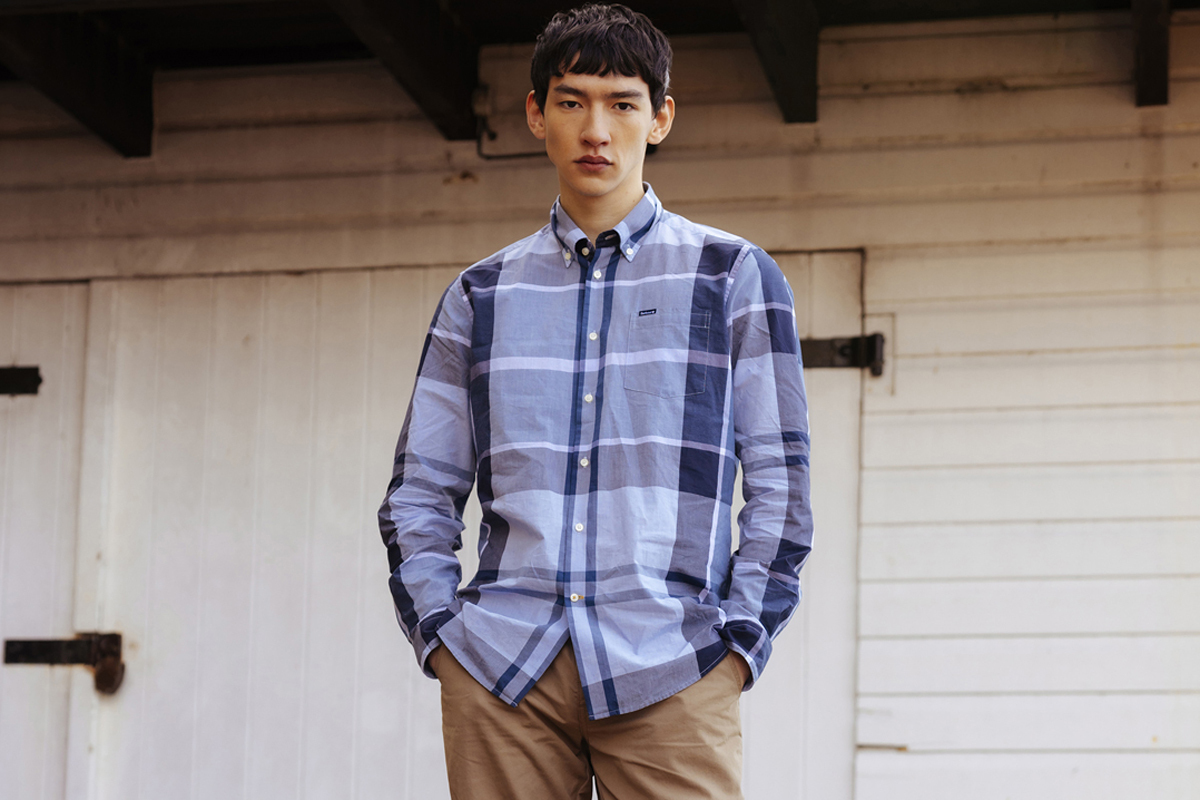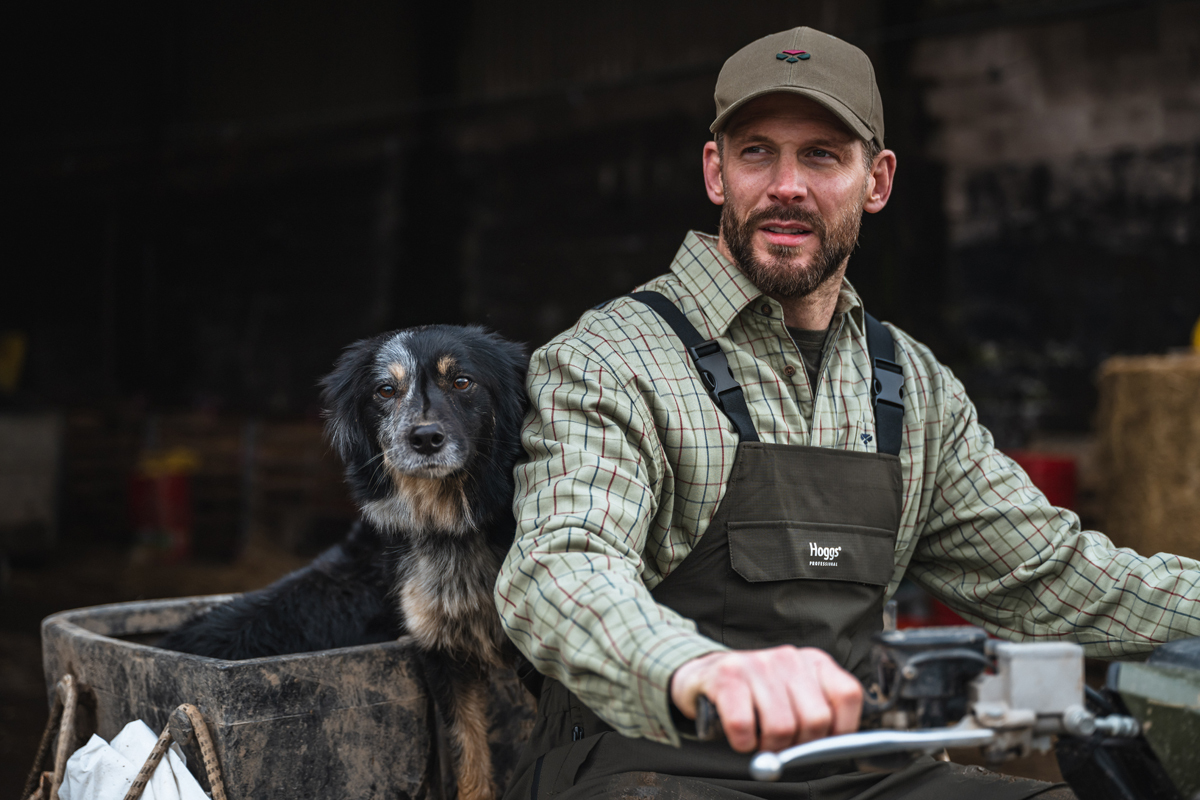The history of country check shirts
Country check shirts are a staple in wardrobes around the world. Known for their practicality and style, country check shirts are characterised by their distinct patterns and timeless appeal. In this blog, we will explore the history of the country check shirt and take a look at the various types of check patterns and fabrics that are typically used to create a country check shirt.
Check Patterns: Tracing Their Origins
Weavers have been crafting check patterns for centuries, with evidence of such designs found in ancient civilizations across various continents. Some of the earliest known examples in Europe include the tartan patterns of Scotland, which date back as far as the 3rd century AD. Originally, these patterns served as a means of identifying different Scottish clans and gradually became a prominent cultural symbol. This tradition was formalised in the 19th century with the establishment of the Scottish Register of Tartans, ensuring the preservation and recognition of these distinctive designs.
The 20th century marked a significant evolution for check patterns, as they moved beyond their traditional roots to become a staple in global fashion. Notably, they became iconic in the 1970s punk movement and later emerged as a key style of the 1990s grunge scene. The enduring appeal and versatility of check patterns have since led to their widespread adoption in modern everyday clothing, with check shirts in particular becoming a true wardrobe essential.
The Emergence of a Country Wear Staple
The country check shirt as we know it started to take shape in the 19th century. The Industrial Revolution brought significant advancements in textile production, making it easier and cheaper to produce patterned fabrics. Cotton twill and flannel became materials of choice for check shirts due to comfort, warmth and breathability. During this time, check shirts became popular among farmers and other labourers in rural areas as the practicality of the check pattern (less likely to show dirt and wear at a time when washing clothing was labour intensive) made it ideal for workwear.
The Tattersall check shirt is often recognised as the quintessential country check shirt and is typically worn as part of classic country attire, for example with tweed breeks and jackets as part of a shooting outfit. The origins of this timeless country shirt can be dated back to the 18th century when Tattersalls Sales, a renowned auction house and horse market, created horse blankets showcasing this distinctive check pattern. The popularity of the pattern soon spread and the Tattersall check was being woven into pure cotton for use in men’s shirts. Due to the robust twill construction and practicality of the design, the Tattersall shirt was adopted by agricultural workers, farmers and estate hands to be worn as a working shirt. The style of the Tattersall shirt endured and it became the favoured choice for countrymen enjoying field sports, shooting and outdoor pursuits. A great example of a classic Tattersall check shirt is the Albert & Maurice Sellack Shirt and, for women, the Seeland Womens Kerry Shooting Shirt.
Types of Check Patterns
Check patterns consist of crossed horizontal and vertical lines to form squares. Several check types are commonly seen in country check shirts, each offering a unique aesthetic and historical background:
Tartan
Tartan and Highland check are typically irregular patterns that consist of criss-crossed horizontal and vertical bands, which can be in multiple colours. For traditional Tartan, each pattern is unique to a specific Scottish clan, serving as a symbol of heritage and identity. Tartan check is a pattern often used in flannel and workwear shirts and remains popular in contemporary fashion for its rich history and vibrant designs. An excellent example of a modern country shirt with a highland-inspired country check design is the Albert & Maurice Shucknall Shirt.
Gingham
Gingham is an even and balanced plain woven fabric where the colouring on the warp and weft yarns is equal which creates the square pattern. Typically found in lighter colours, such as blue and white or pink and white, gingham has a fresh, clean look that is often associated with a smart and tailored style. Take a look at the Albert & Maurice Evesbatch Shirt for a great quality gingham check shirt in a classic blue and white colourway.
Tattersall
The name of this check comes from Tattersall’s horse market in London, where this pattern was originally used on horse blankets in the 18th century. Tattersall check patterns are an evenly spaced design, often seen on a lighter base with darker, two-colour check pattern. Twill cloth is the most popular base for Tattersall check shirts to create a durable and resilient everyday checked shirt that can withstand the demands of country life. Three excellent examples of timeless Tattersall shirts are the Barbour Bank Tattersall Shirt, Schoffel Burnham Tattersall Shirt and the Hoggs of Fife Balmoral Luxury Tattersall Shirt.
Windowpane
The windowpane check pattern features thin lines forming large squares, reminiscent of windowpanes. This pattern is believed to have originated in England and gained popularity in the 20th Century. Windowpane check is a versatile and simplistic check that offers a modern, clean aesthetic ideal for smarter wear. The Albert and Maurice Thruxton Shirt is a stylish example of a simple windowpane check design.
Types of Fabric and Weaves
Below are some of the common types of fabric and weaves used in traditional country check shirts. The different types of fabric each have their own properties to make them suitable for differing requirements and environments.
Brushed Cotton and Flannel
Favoured for offering warmth and breathable comfort, brushed cotton and flannel fabrics are soft to the touch. Typically, brushed cotton is brushed on one side while flannel is brushed on both sides for a soft and smooth texture. Flannel tends to be thicker and warmer than brushed cotton but with similar properties. Flannel check shirts and overshirts are a staple in colder climates and are ideal for outdoor activities and workwear. The Albert & Maurice Checkley Flannel Shirt is a fantastic example and well worth a place in any man’s wardrobe.
Linen
Linen fabrics are lightweight and breathable making them a favourite choice for wearing in hot weather. Linen dries far quicker than cotton and is ideal for casual wear as its lightweight nature can easily wrinkle. The Barbour Linton Tailored Linen Shirt is a cool linen shirt with micro check pattern for casual summer style.
Oxford Cotton
Oxford cotton is created with a basket weave where multiple weft threads are crossed with an equal number of warps. Quite often the weft threads are one colour and the warp threads are white which creates a subtle and smart two-tone colour appearance.
Twill
Twill fabrics are characterised by tightly packed yarns in a noticeable diagonal weave created by an offset in the warp threads. It is usually thicker in texture, making it the ideal choice for country check shirts that need to be resilient and comfortable to wear. Twill is popular because it is durable, resistant to creases and easy to care for. The Seeland Shooting Shirt is an excellent example of a check shirt with a durable twill finish.
Poplin
Poplin fabric is characterised by its distinctive ribbed texture and tightly closed weave. Poplin is a classic and crisp fabric that is very strong and durable but also has a smooth and silky finish. It is primarily made from 100% cotton, making it lightweight but still retaining strength.
Herringbone
The name of this weave comes from its resemblance to the bones of a herring fish. Herringbone weave is a type of twill and is created by mirroring the weave to create the distinctive V-shaped look. Again, this weave creates a thicker and more durable fabric favoured for country check shirts.
The Modern Check Shirt
The check shirt's enduring appeal lies in its adaptability. From casual wear to smart outfits, a checked shirt can be styled in countless ways—layered over a t-shirt for a casual, utilitarian look; tucked into jeans for a smart-casual weekday; paired with a fleece gilet for practicality in the field; or even paired with a blazer or V-neck jumper for a more polished appearance.
Checked shirts have moved beyond their rustic origins to become a versatile piece of clothing suitable for a variety of occasions and remain a go-to choice for a laid-back yet stylish look. Modern variations have introduced a whole variety of fabrics, colours, and styles, reflecting contemporary trends while staying true to the shirt's traditional appeal.
Conclusion
The history and evolution of the country check shirt reflects the interplay between practicality, culture, and fashion. From its early days as essential workwear to its current role as a reliable and stylish wardrobe staple, the check shirt has proven its enduring appeal. A country check shirt offers a blend of comfort, style, and timeless charm and the variety of check patterns and fabrics available today ensures that there is a check shirt for every occasion and personal preference. As fashion continues to evolve, it's likely that the country check shirt will remain a beloved and versatile clothing choice.
Take a look at our great range of premium country check shirts for both men and women to find your new favourite.

Posted by Abi
Abi is a web content specialist and brand manager at Philip Morris & Son, where she plays a key role in shaping the success of a diverse range of core brands, including Ariat, Alan Paine, Brabantia, Blundstone, Dubarry, and Lazy Jacks. With over 10 years of experience in the clothing retail sector, Abi joined the company in 2022, and her creativity and keen attention to detail are instrumental in enhancing product pages and optimising SEO strategies to drive brand visibility and growth.
Growing up surrounded by the Herefordshire countryside, Abi's love for the outdoors informs her understanding of the products that resonate with our customers. Her enjoyment of outdoor activities including camping and hiking gives her first-hand knowledge of how the right gear can enhance outdoor experiences. This personal insight enables her to expertly curate products that meet the needs of fellow outdoor enthusiasts. Outside of work, Abi also enjoys live music, is a keen cook and yoga enthusiast, and has recently taken up running (again!).


